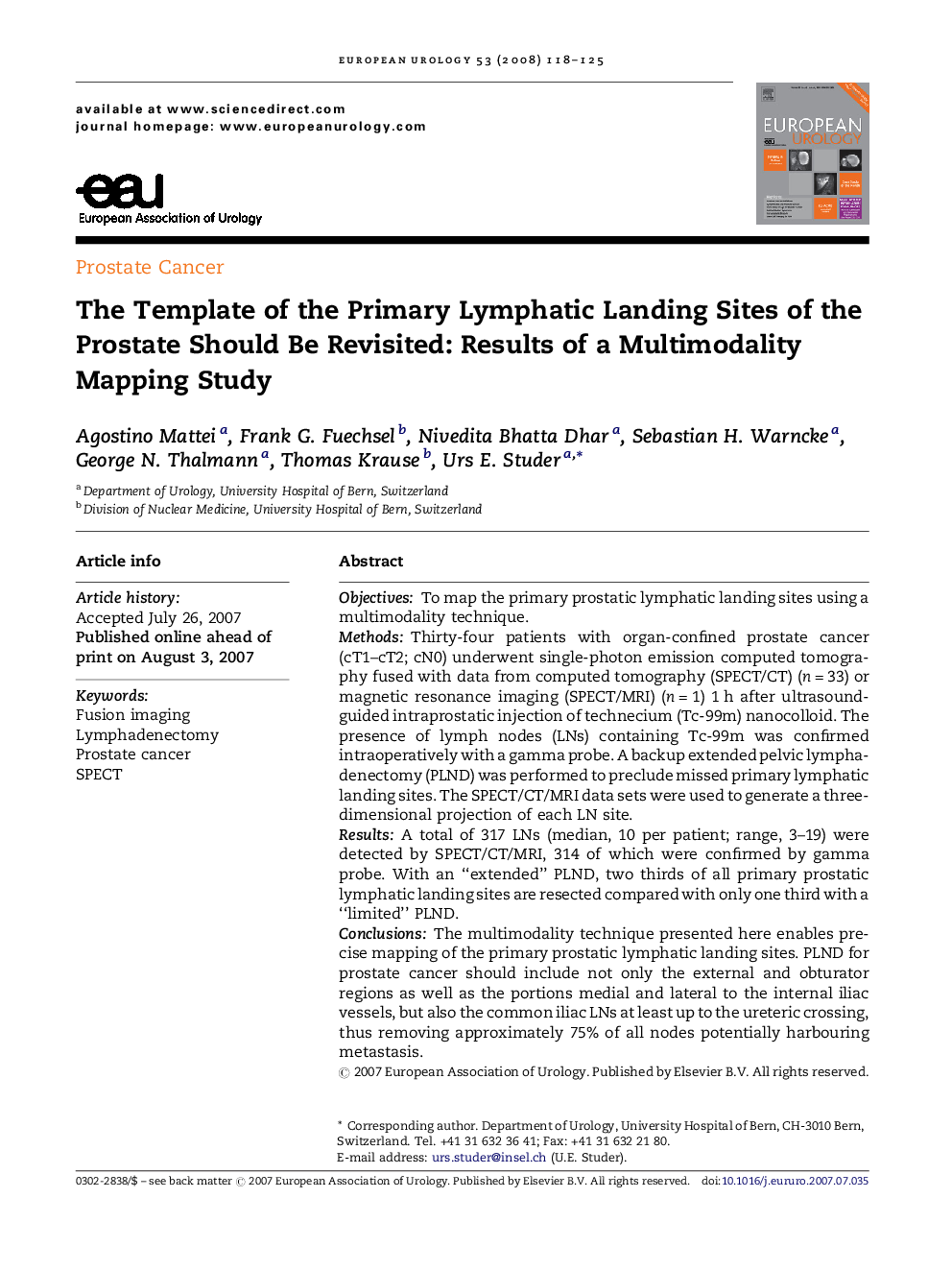| Article ID | Journal | Published Year | Pages | File Type |
|---|---|---|---|---|
| 3927696 | European Urology | 2008 | 8 Pages |
ObjectivesTo map the primary prostatic lymphatic landing sites using a multimodality technique.MethodsThirty-four patients with organ-confined prostate cancer (cT1–cT2; cN0) underwent single-photon emission computed tomography fused with data from computed tomography (SPECT/CT) (n = 33) or magnetic resonance imaging (SPECT/MRI) (n = 1) 1 h after ultrasound-guided intraprostatic injection of technecium (Tc-99m) nanocolloid. The presence of lymph nodes (LNs) containing Tc-99m was confirmed intraoperatively with a gamma probe. A backup extended pelvic lymphadenectomy (PLND) was performed to preclude missed primary lymphatic landing sites. The SPECT/CT/MRI data sets were used to generate a three-dimensional projection of each LN site.ResultsA total of 317 LNs (median, 10 per patient; range, 3–19) were detected by SPECT/CT/MRI, 314 of which were confirmed by gamma probe. With an “extended” PLND, two thirds of all primary prostatic lymphatic landing sites are resected compared with only one third with a “limited” PLND.ConclusionsThe multimodality technique presented here enables precise mapping of the primary prostatic lymphatic landing sites. PLND for prostate cancer should include not only the external and obturator regions as well as the portions medial and lateral to the internal iliac vessels, but also the common iliac LNs at least up to the ureteric crossing, thus removing approximately 75% of all nodes potentially harbouring metastasis.
